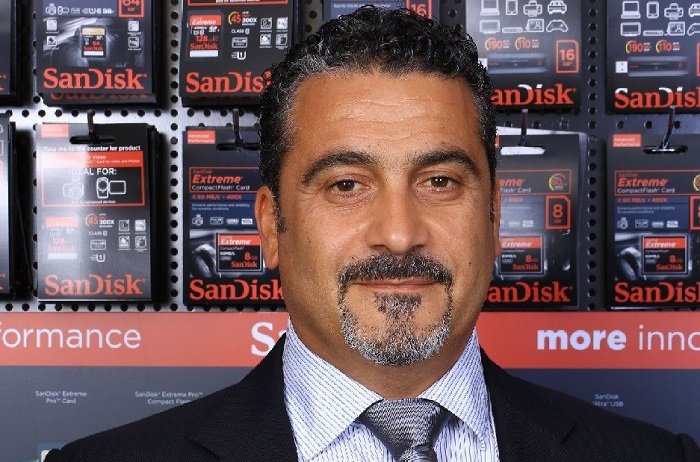Data storage market in the region has been on a steady upward swing, thanks to the advancements in technology, demands of a growing surveillance market and increasing consumer appetite for storage of videos, images, etc. Nearly two years since the Western Digital acquisition and a month into a VAT introduced business, the Sr. Director of Retail Sales for Mediterranean MEA at Sandisk, Tarek Husseini shares how this 30 year old company has not just survived but continued to grow in a market where many prominent flash players were unable to hold ground.

For SanDisk, the year started at a promising note with the launch of a prototype of the world’s smallest 1TB USB-C flash drive at CES this year. The 1TB USB-C drive prototype is albeit a working one and is expected in Middle East markets by mid-2018.
The company has been quite active for the past six months with a number of new products launched covering a range of applications. “We realise that as technology evolves, we need to come up with new products to address the demand created. Among the launches in latter half of 2017 are our high capacity 400GB microSD card for mobile devices, Nintendo Switch SanDiskMemory Cards, iXpand Base storage solution for Apple devices with backup capability, and automotive and industrial memory cards for specialized applications.”
In the spotlight, currently is our iXpand Base, says Husseini. With this product we have addressed two major concerns of all iPhone/iPad users – backup and charging. Every time you charge your iPhone with the iXpand Base, it automatically backs up your photos, videos and contacts for you.
The game changer for consumer storage industry is the advancement of 3D NANO technology that has resulted in increase in SSD capacities, while its prices have declined, as per research analysts at Future Market Insights. This year will witness a softening in the prices for flash storage devices and a simultaneous increase in the storage capacity requirements, adds Husseini.
Over the years, we have continued catering to the increasing demands of the storage industry with relevant products for specific applications. “We have continued to provide workable solutions ahead of market trends, usually being the first to bring a number of products to the consumers. When I joined SanDisk around 14 years ago, we were not sure if anyone needed our ‘high capacity’ 128MB microSD memory card! And just a year later, consumer demand for storage capacity changed drastically with the arrival of megapixel technology. This led to the launch of our 1GB micoSD card in 2005 and our subsequent launches of products that address both changing customer habits and advances in technology.”
Surveillance, in particular home security is a strong driving factor for rising storage capacity needs. Further, as consumers engage with more and more capacity-hungry devices like action cams and drones, new avenues for growth are emerging and with technology moving towards 8k, this demand for digital memory and storage is only going to increase.
SanDisk has a wide line-up of storage products for cameras, smartphones, laptops, notebooks, etc. The company enjoys maximum revenues from SD cards for mobile phones, followed by USBs that claim a slightly smaller share of the business, explains Husseini. “With vast advancements in camera quality of smartphones, a number of users have stopped using a camera for regular photography. This has brought down the volume of storage cards for camera, however, there still exists a demand for high end camera applications amounting to a mere 2-3% of all revenues.”
Husseini attributes a major part of the company’s success to maintaining constant interaction with the consumers and keeping them excited through competitions, roadshows, etc., and brand visibility through media outlets and via social media platforms.
He adds that they also offer excellent tech support to the consumers to ensure brand loyalty. The company offers replacement guarantee on all returns, however, he added that their RMA (return merchandise authorization) was next to zero. “We literally don’t get anything back and when we do, then within reason, our retailers and resellers have been instructed to simply replace the product, no questions asked.”
Finally, Husseini admits that there exist challenges in driving the channel to a certain extent but with an array of leading in-country distributors and resellers, he says that the company enjoys sizeable business growth year-on-year.











